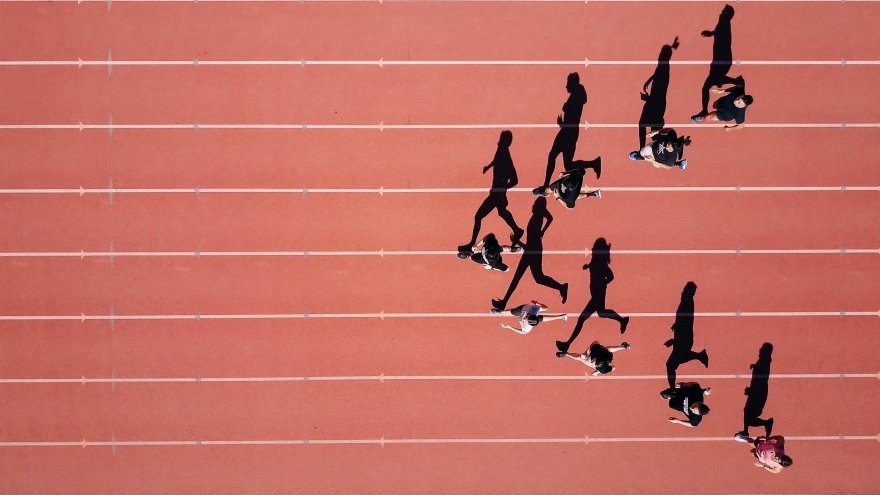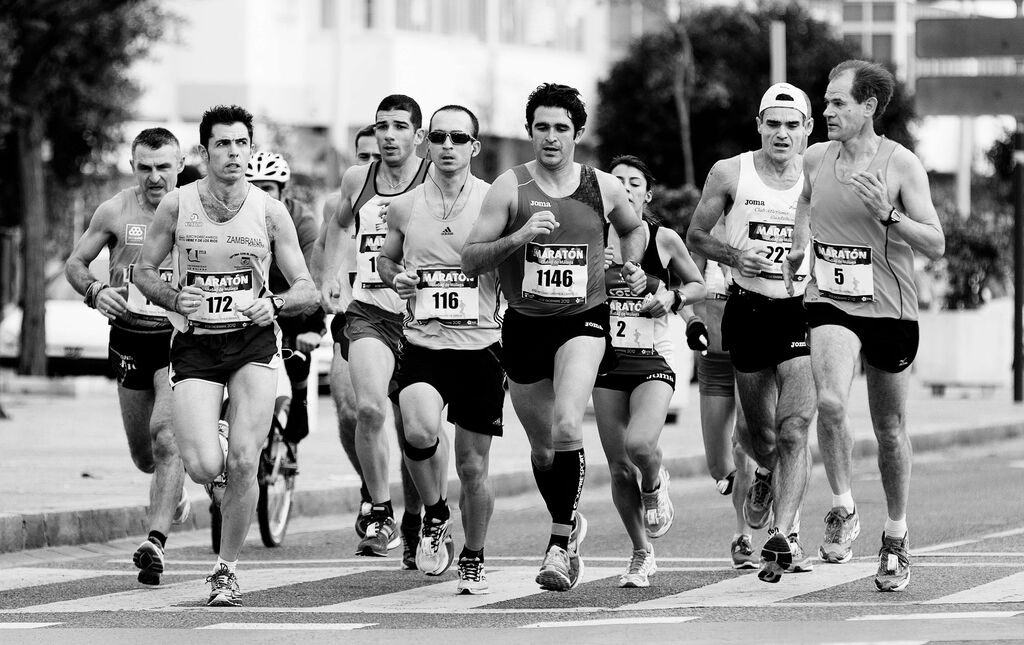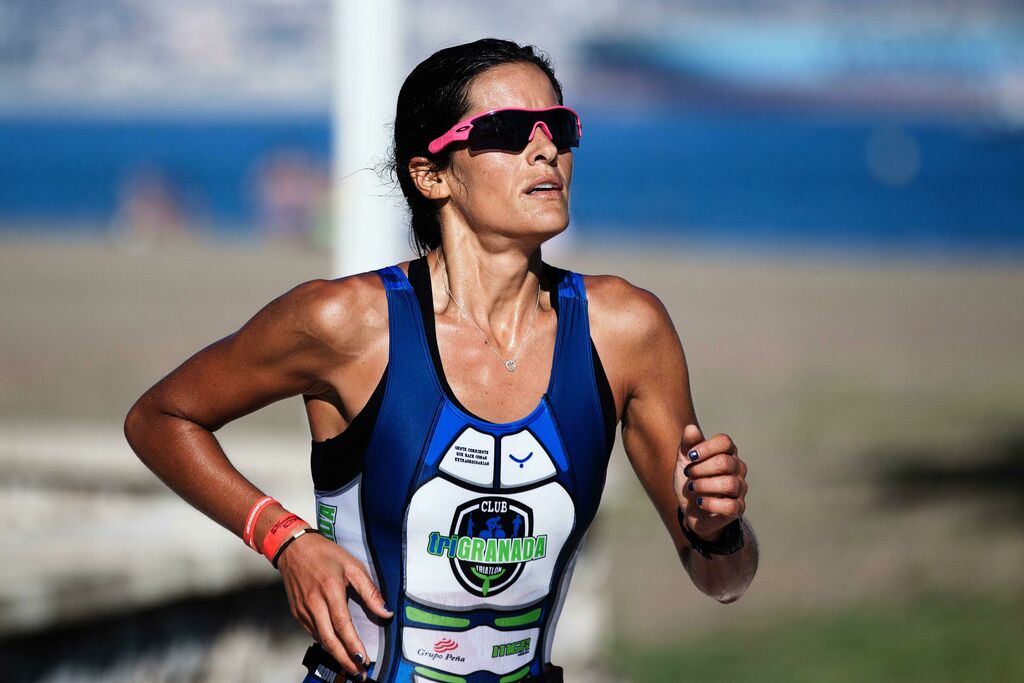Foolproof Ways to Increase Pain Tolerance to Improve Endurance

For goal driven runners, pain is inevitable. Pushing for the podium or that PR? You know it’s going to hurt. Just how much it will hurt and if you’ll be able to hang on will depend on you. We have already established that pain tolerance, rather than depletion of physical capacity, is one of the major limiting factors in endurance sports. So is it then possible to improve one’s pain tolerance to improve running performance? It sure is, and we will show you how.
Pain in Endurance Sport: Why Does It Hurt?
First lets look at the normal pain associated with endurance sport such as running. With “pain” we are not referring to the pain associated with an imminent or recurring injury. We are talking about the physical discomfort that accompanies increased fatigue levels. The 1923 model of exercise fatigue by Archibald V. Hill details that exercise fatigue stems from an increase in blood lactate concentration. This develops when the heart is no longer able to pump sufficient oxygenated blood to cover the increased demands from exercising muscles. This, of course relates, to an athlete’s individual aerobic capacity. The exercise fatigue model stipulated that lactic acid was the sole limiting factor in athletic performance. Also, that athletes with larger aerobic capacities would be most successful. But we have grown wiser since 1923.

In later years we developed the understanding that the mind, rather than physiological factors, is in central command of our performance. While running, the brain constructs an overall picture of the current situation and sends commands based on that. Input may include physiological factors but is not limited to it. Other factors that induce feelings of discomfort are personal beliefs, past experiences and many other psychological factors.
According to Professor Tim Noakes, emeritus professor in the Division of Exercise Science and Sports Medicine at the University of Cape Town, discomfort levels experienced during endurance sports are mostly illusory, and very much proportional to how far you are from the finish line. He reckons that the best athletes do not generate discomfort symptoms to the same extent than less succesful runners. And they also don’t let these mind tricks interfere with their performance as much either.
Ways to Increase Your Pain Tolerance
As a runner starting out, or restarting after an off season, we know there are loads of initial pain. Burning quads, screaming lungs, achy hips, they all come with the territory of getting (back) in the game. Then, after a week or three, even though we are constantly revving up the mileage and intensity, it tends to become easier. Later on – even fun! But how is that possible? Firstly, of course, our bodies are able to adapt physiologically. Hence the increased fitness we reap from training. But we also get familiar with the accompanying pain. We know that, even though it hurts, we have been here before. We start to associate discomfort with the rewards of training: increased fitness, a sculpted body, increased feeling of wellness and feelings of being powerful.

During Training
Just as pain is the feedback messenger that tells our brains that we are pushing hard, so the absence of pain is also a signal. Once we start to notice the complete absence of pain during or after training, it is possible that we have reached a fitness plateau. If you want to improve your aerobic capacity, training with a heart rate monitor may remedy this. With the feedback from your heart rate it is possible to know whether you are pushing or slacking. And the only way to possibly increase overall fitness is to perform a (small) fraction of your weekly training in the realms of anaerobic respiration. Learning how to train within the correct heart rate zones will optimize fitness gains for both experienced runners and newcomers.
During the Early Stages of a Race
Even after following the training program to the T, we will have to accept that there will be pain during a hard race. Elite runners also experience loads of pain during races. The way they mentally deal with the pain will depend on the stage within the race. Most elite runners report that they employ ways to distract themselves during the early stages of the race.

Methods of distraction included:
- Practicing gratitude: Karl Meltzer, holder of the Appalachian Trail record, reported that he practiced gratitude to help him push through. Dedicate a specific sector, like one mile, to each of the people who made the journey possible. Focusing your thoughts on that person distracts the mind from the discomfort of the task at hand.
- Meditation: Timothy Olsen reported that meditating through the final miles of the 2012 Western States 100 ultra-marathon helped him to complete and win the race. Meditation is the practice of clearing the mind in order to reduce anxiety. Scattered thoughts can be put at bay by focusing on your breathing pattern while repeating a mantra.
During the Final Stages of a Race
Ever watched the finishing stages of a big city marathon? The expression of determination on the faces of the leading pack is a dead giveaway: they are absolutely and unreservedly focused on the task at hand. Most elites reports that, as much as they like to run on autopilot during the initial parts of a race, their attention turns inward in the final stages.

To help you focus, try to:
- Clearly define your ‘why’: Before entering a race, think about the goals you would like to achieve in the race. The clearer the goal and the more you desire it, the easier it will be to focus on it and achieve it. Kilian Jornet remarks that, when the going gets tough, he visualizes his goal of breaking the tape at the finish line. He employs all his senses to make it all the more real in his mind. So much so that he starts to taste the tears of joy at winning. This gives him enough positive energy to see him through any pain and fatigue.
- Whole body form checks: Runners know that form checks are vital during all parts of the race, but more so during the tougher final parts. Correcting your form may immediately alleviate some niggles and save some much needed energy. New Zealand Olympic marathoner, Lorraine Moller, says that she scouts for areas of tension during body checks. She found that she could increase her pace without increasing the effort just by relaxing tensed-up areas.
In a Nutshell
During a hard endurance effort discomfort and suffering is a given. Although many physiological factors contribute to overall fatigue, many of the symptoms lie purely in the mind and can just as easily be overcome in the mind. By improving one’s pain tolerance through some simple yet effective mind methods, it is possible for any runner to move or crush his endurance limits.
Sources
- , Fatigue in Endurance Sport: Parallels With Pain Science., Online Publication
- , Tim Noakes on Fatigue, Cowardice, Winners and Losers, Online Publication
- , 6 Tips to Push Past the Pain, Online Publication
- , Mental Tricks To Push Through Mid-Race Pain, Online Publication
- , Meditation Can Make You a Better Runner, Online Publication
- , Pain: Deal With It., Online Publication
Latest Articles
 Is Running on a Treadmill Easier Than Running Outside?Runners have their own preferences, whether it is treadmill running, running outside on the road, or exploring trails. So...
Is Running on a Treadmill Easier Than Running Outside?Runners have their own preferences, whether it is treadmill running, running outside on the road, or exploring trails. So... Is It OK to Use Trail Running Shoes on the Road?While trail running shoes can be used on roads, especially in situations where a runner encounters mixed terrains or pref...
Is It OK to Use Trail Running Shoes on the Road?While trail running shoes can be used on roads, especially in situations where a runner encounters mixed terrains or pref... How to Fix Sore Quads After Running?Rest, ice, gentle stretching, and over-the-counter pain relievers can help soothe sore quads after running. Also, ensure ...
How to Fix Sore Quads After Running?Rest, ice, gentle stretching, and over-the-counter pain relievers can help soothe sore quads after running. Also, ensure ... 10 Fruits With The Most Electrolytes to Replace Sports DrinksThese fruits are high in electrolytes such as potassium, magnesium, and calcium, essential for hydration, muscle function...
10 Fruits With The Most Electrolytes to Replace Sports DrinksThese fruits are high in electrolytes such as potassium, magnesium, and calcium, essential for hydration, muscle function...

